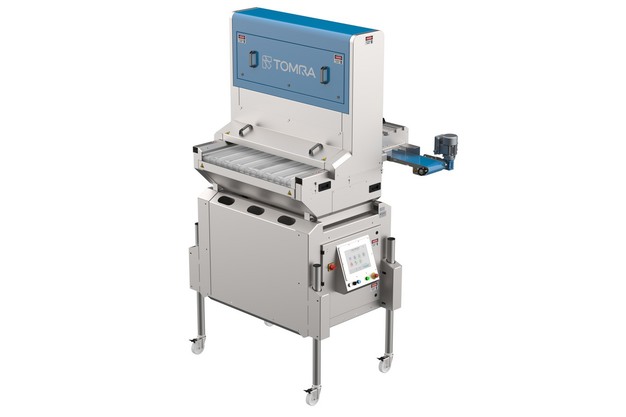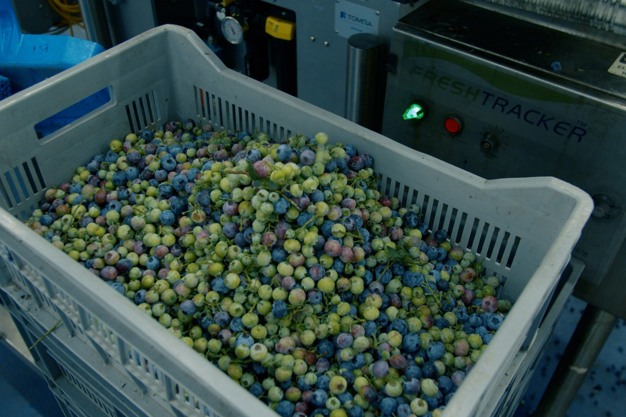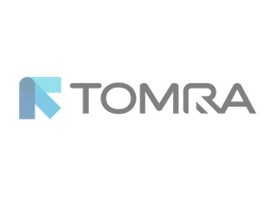The global trend towards the machine harvesting of blueberries has brought challenges. Although machine harvesters are faster and less costly than manual picking, they also harvest debris and fruit clusters which cause disruption on packhouse production lines. Machines also harvest unwanted green and red berries which unnecessarily reduce pack-out from grading lines. The new TOMRA Neon allows Blueberry growers to automatically process machine harvested blueberries for the fresh market.
TOMRA Neon pre-grades machine-harvested blueberries before transferring the fruit directly onto TOMRA’s KATO260 optical sorter and sizer. By employing artificial intelligence modelling, TOMRA Neon detects clusters with unrivalled accuracy. Because it is compact, durable, and easy to clean, it fits perfectly into any processing and packing line

Recognizing the challenge
Manual blueberry harvesting is labor-intensive and requires pickers to spend long hours in the field. This is exactly the kind of tediously repetitive, physically tiring work that people no longer want to do. As a consequence, it is becoming increasingly difficult for growers to recruit and retain seasonal harvesting staff, which has accelerated the adoption of automated harvesting.
Another good reason for harvesting mechanically is the need for speed. Machines work much more rapidly than people. But machines cannot see or judge blueberries on the bushes in the same way that people can. As well as harvesting good fruit, machines also pick fruit that’s unripe or grouped in clusters. By working closely with blueberry growers and packhouses, TOMRA Food recognized the need to help customers move to machine harvesting, adding value by reducing labor requirements, while still delivering the highest quality product to the consumer.
TOMRA Food’s knowledge of blueberry sorting, grading and packing goes back well over 20 years as it includes the specialized knowledge possessed by the New Zealand-based businesses Compac and BBC Technologies, which TOMRA acquired in 2016 and 2018.
To achieve the necessary technical sophistication, TOMRA’s engineers drew extensively on their experience developing the company’s LUCAi AI technology, an optional add-on for the KATO260 which classifies and grades fruit with unrivalled accuracy. LUCAi employs Deep Learning, which uses pre-trained models to teach computers how to process data, such as complex patterns in photos – a principal which TOMRA will extend to other applications.

Impressive results
TOMRA Neon was tested and validated over two-and-a-half years in varied machine-harvested conditions in North America and New Zealand. These trials culminated in the controlled, early release and sale of 10 machines during the 2023 season to TOMRA customers. This made it possible to fine-tune TOMRA Neon’s software, AI algorithms, and mechanical set-up based on millions of kilos of machine-harvested blueberries in commercial environments.
For more information: 
Michelle Haynes
TOMRA Food
4 Henderson Place PO Box 13 516
Onehunga 1061- New Zealand
Tel.: +64 21 377 141
Email: [email protected]
www.tomra.com/food
